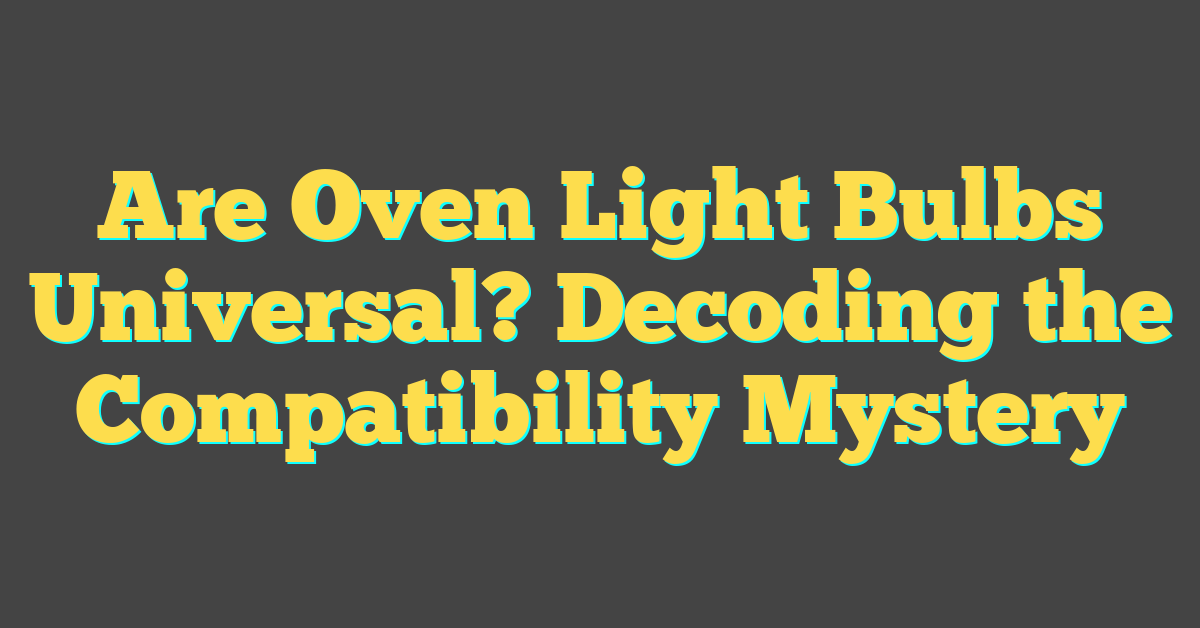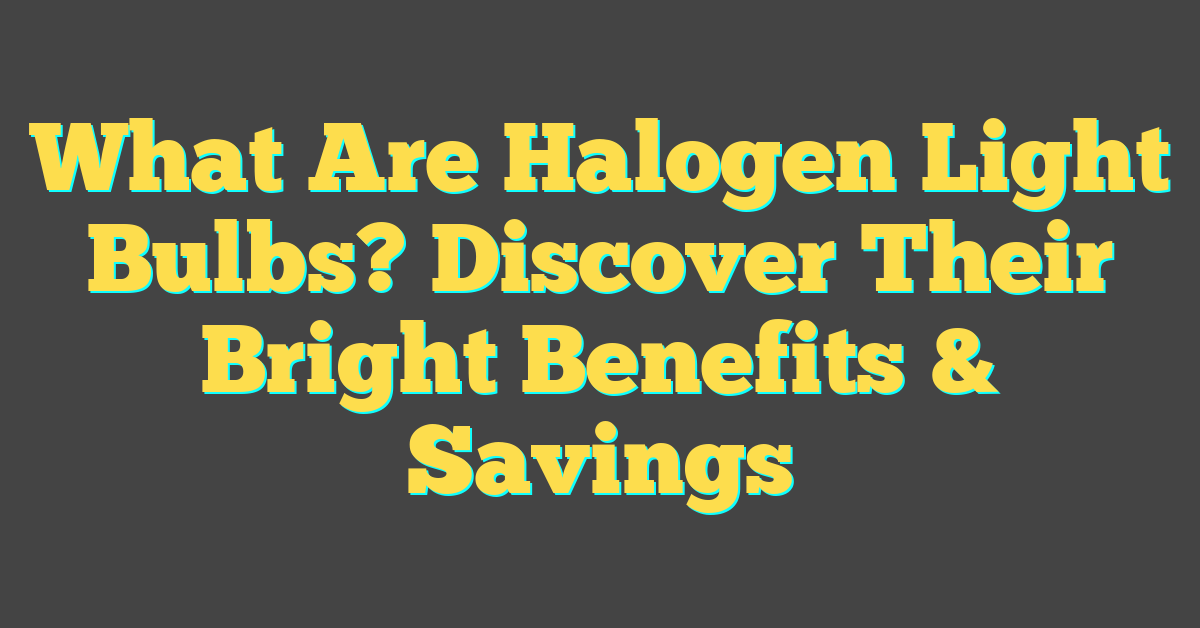Ever found yourself standing on a chair, light bulb in hand, pondering whether you should flip the switch off before making the swap? It’s a common scenario that stirs up a mix of practicality and safety concerns. Let’s shed some light on whether you can change a light bulb with the power on.

Safety first, right? You’ve heard it a million times, but when it comes to electricity, it’s more than just a saying—it’s a must. Changing a light bulb might seem like a no-brainer, but there’s a bit more to it than meets the eye.
Before you reach for that new bulb, let’s dive into the nitty-gritty of what’s at stake. Knowing the dos and don’ts can save you more than just a little hassle—it can keep you safe. So, should you cut the power, or is it okay to live on the edge? Let’s find out.
The Importance of Safety in Electrical Work
Before you proceed to change that light bulb with the switch still flipped on, it’s crucial to take a step back and recognize the importance of safety in electrical work. You wouldn’t ignore a ‘wet floor’ sign to avoid slipping, and similarly, understanding the hazards of electricity should be a priority before taking any action.
Electricity is not a force to take lightly. Even a task as simple as changing a light bulb can introduce risks if not approached correctly. In a world where you’ve become accustomed to DIY fixes, particularly within your home, there’s an added responsibility to understand and respect the potential dangers. Improper handling of electrical components can lead to shocks, burns, and in extreme cases, can be fatal.
Here’s something to keep in mind: the human body is an excellent conductor of electricity. So, even if you’re experienced with home DIY projects, it’s a best practice to turn off the power at the circuit breaker before changing a light bulb. This eliminates the risk of an electric current traveling through your body, which can have severe consequences.
Moreover, think about your surrounding environment when undertaking any electrical work. Are you standing on a wet surface? Are you using a metal ladder? These factors can dramatically increase your risk of injury when dealing with electricity.
It’s also wise to educate yourself on the different types of light bulbs and their specific requirements. For instance, fluorescent and HID (high-intensity discharge) lamps contain gases that could be harmful if the bulb breaks. In such cases, having the power off is not just a safety precaution for you but also helps prevent potential damage to the bulb itself and its fixture.
By following safety protocols, you not only protect yourself but also ensure that your lighting remains in top-notch condition. So remember, when you’re about to twist that bulb into place, make sure you’re not just thinking about lighting up the room, but also how to keep the spotlight on safety.
Understanding the Dangers of Electricity

When dealing with electricity, it’s crucial to recognize that even a task as simple as changing a light bulb has its hazards. Electric currents, though invisible, have the power to cause serious injury or even be lethal. Here are the main dangers:
- Electric Shock: An electric shock occurs when electric current passes through the body. It can lead to burns, heart issues, and in severe cases, can be fatal.
- Short Circuit: A short can develop if the fixture is improperly wired or damaged, potentially leading to sparks or fires.
- Electrical Burns: These can occur if you come into direct contact with an electrical source, resulting in tissue damage.
When a light bulb is changed with the power on, these risks are significantly heightened. Despite the seeming simplicity of the bulb itself, the electricity fuelling it is demanding of respect and caution.
Safe Practices are non-negotiable. It’s essential to ensure that you switch off the power at the circuit breaker to create a safe working environment. You might believe you can undertake this task with care, but even pros can encounter unexpected issues in what appears to be a risk-free situation. Plus, turning off the circuit prevents the bulb from being hot to the touch, which can cause burns or discomfort.
Keep in mind that different light fixtures can have varying electrical configurations. The inner workings of a chandelier, for instance, can be far more complex than those of a bedside lamp. Each comes with its own intricacies and potential dangers.
And don’t forget—light bulbs themselves are delicate items. A sudden burst of current when scre*wing in a bulb can shorten its lifespan or even cause it to blow out immediately. It’s not just about safety; it’s also about prolonging the use and efficiency of your lighting.
« Which Light Bulbs Are Most Energy Efficient? Discover the Best for Savings
Are Light Bulb Cameras Easy to Steal? Secure Your Home Smarter »
Always remember to handle all components with care. Gloves and safety glasses are recommended for an extra layer of protection, especially when working with overhead fixtures or in damp locations, where the risk of electrical issues increases.
Can You Change a Light Bulb with the Power On?

In your years of tinkering with DIY projects and illuminating spaces, you’ve likely pondered whether changing a light bulb with the power on is possible or prudent. Technically, yes, you can change a bulb with the power on, but let’s dive deeper into why this might not be the best idea.
Safety should always be your number one priority. With the power on, the risk of an electric shock increases substantially. It’s a casual act—twisting a bulb into place—but an inadvertent brush of the live socket components could send a jolt through your body, which is not only unpleasant but can be deadly.
Moreover, there’s the matter of the light fixture itself. Some are designed with enclosures or recesses that might require you to reach in with your fingers dangerously close to electrified parts. Even if you’re wearing protective gear like gloves, the margin for error is slim. Besides, a bulb that’s been on for a while could be scorching hot. Handling it without cutting power can result in thermal burns.
What’s more, think about the lifespan of your light bulbs. Frequent manipulations with the current running can weaken the integrity of delicate filaments, leading to premature bulb failure. For the longevity of your fixtures and bulbs alike, taking that extra minute to switch off the power is beneficial.
In overhead or damp locations, the stakes are even higher. A sudden slip or the presence of moisture can create conditions for an electrical incident that could otherwise have been easily avoided.
While it might seem more expedient to just twist in a new bulb while the power’s flowing, ask yourself if it’s worth the potential dangers. After all, you want your home projects to be joyous, not jolting. Flip that switch off, change the bulb safely, and enjoy the shine and glow of a job well done, without the sparks.
Exploring the Risks Involved

As someone who’s passionate about DIY projects and lighting, you’re no stranger to the satisfaction that comes from a successful bulb change. Yet, it’s crucial to understand the risks to keep that post-DIY glow from turning into a trip to the emergency room. Electric shock is one of the primary dangers when changing a light bulb with the power on. It might seem like a quick switch, but if you come into contact with the live electrical components, you’re risking a shock that can cause serious injury or even death.
Beyond the shock factor, leaving the power on increases the chance of a short circuit. This happens when the electrical flow finds an unintended path, potentially resulting in sparks or a fire. Additionally, the bulb itself may become a hazard. When electricity flows through it while you’re trying to change it, it could lead to thermal burns from the bulb’s surface, which can get extremely hot very quickly.
Here’s a look at what you might be facing:
| Risk | Potential Consequence |
|---|---|
| Electric shock | Serious injury or death |
| Short circuit | Sparks or fire |
| Thermal burns | Burns from hot bulb surface |
| Premature bulb failure | Cost of replacement and repeated effort |
And let’s not overlook the seemingly benign but quite real threat of premature bulb failure. Light bulbs are designed to handle a consistent electrical current, and the on-and-off surge of power that comes from meddling with the connection can shorten their lifespan significantly.
So while you’re gearing up for your next lighting project, make sure you remember to keep safety at the forefront. Gloves and protective eyewear are your allies, and a quick trip to the circuit breaker can save you from these all-too-real risks. Your DIY skills paired with a healthy respect for electricity will light up your home in ways that are safe and satisfying.
Best Practices for Changing a Light Bulb Safely

So you’re knee-deep in your DIY lighting project and it’s time to tackle the light bulb change. First off, turn off the power at the circuit breaker or light switch. It’s a non-negotiable step to prevent those hair-raising experiences. Trust me, you’ll want to tell the tale, not be one.
Now that the power’s off, give the bulb some time to cool down. Ever touched a bulb right after it’s been on? Ouch, right? Let it sit for a few minutes before you make your move. Your fingers will thank you.
- Gather your tools: Gloves to grip, protective eyewear to shield – don’t skimp on these. A stable stepladder? Absolutely. You’ve got to reach that bulb without turning into an accidental acrobat.
- Remove the Old Bulb: Grasp it firmly but gently, twist counterclockwise, and it’s out. Simple as that. Stuck? Don’t force it – a broken bulb is a danger you don’t want.
- Check the Fixture: Peek inside. Dust and debris can cause issues, so give it a quick clean. A dry cloth should do the trick, unless you find corrosion. Then it might be time to call in the pros.
- Install the New Bulb: Line it up with the socket, twist clockwise, and keep going until it’s snug. Not too tight though – you’re not trying to prove a point, just lighting up a room.
- Restore Power: Flip that switch and bask in the glow of your handiwork.
Remember, each step here is just as crucial as the bulb you’re installing. Safety should never take a backseat, not even when you’re feeling like a home improvement hero. Keep your wits about you, and every change will be a bright one.
Conclusion
So there you have it – while you might be tempted to rush through the task, remember that taking the extra minute to turn off the power can make all the difference. Your safety is paramount and not worth the risk for the sake of convenience. Always let the bulb cool, gear up with gloves and eye protection, and handle with care. By following these simple steps, you’ll ensure that you’re not only changing a light bulb safely but also setting yourself up for a well-lit, hazard-free space. Stay safe and happy DIY-ing!
Frequently Asked Questions
What is the first step to safely change a light bulb?
Always start by turning off the power to the light fixture to prevent any electric shock. It’s the safest way to begin the process of changing a light bulb.
How long should I wait for the bulb to cool down before changing it?
Allow the bulb to cool down for a few minutes after switching off the power, especially if it was on for a while. This helps prevent burns.
Should I wear any protective gear while changing a light bulb?
Yes, wearing gloves and protective eyewear is recommended to protect your hands from sharp edges and your eyes from possible shattered glass.
What should I do if the light bulb is stuck?
If the light bulb is stuck, don’t force it. Gently wiggle the bulb back and forth to loosen it, or use a bulb changer designed for removing stuck bulbs.
Why is it important not to force a stuck light bulb?
Forcing a stuck light bulb can cause it to break, leading to potential injury from glass shards. It’s better to approach it with patience and use the correct tools.
What is the key takeaway from the article regarding changing light bulbs?
The key message is that safety should always be your top priority when undertaking any DIY lighting projects, including changing light bulbs.




